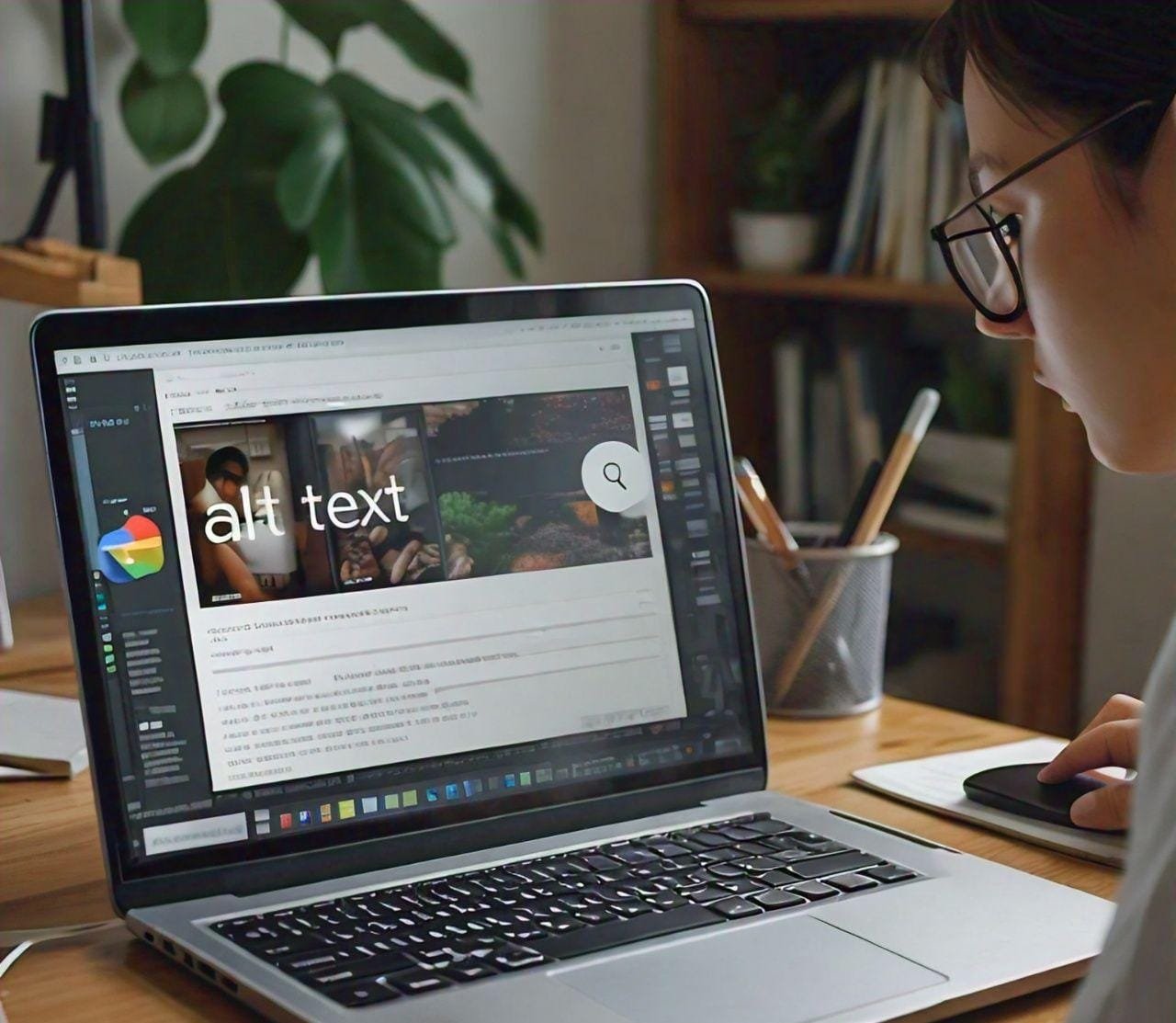Why Alt Text Is More Than Just a Description and How It Can Impact Your SEO Strategy
Alt text is one of those subjects that tend to fly under the radar in the enormous world of SEO (Search Engine Optimization). That said, Google has straight up been all like “alt text, do or die” as it pertains to your site being more accessible and overall getting those search engine points.SEVERE.warning Apple users? Alt text, short for “alternative text”, is an attribute added to an image element to supply a function when that certain element cannot be rendered or accessed.
Alt text has been used as an accessibility feature by digital marketers and website owners for many years, but Google’s new guidelines are a clear indication that alt text now serves two main purposes: making the web more inclusive and boosting SEO rankings. In this review, we will explore the recommendations of Google for how to use alt text and why it is an attribute that any good SEO strategy cannot live without; discuss a specially designed manifesto on alt text; find out the dual impact (on accessibility and search engine performance) of implementing alt text properly.
What Is Alt Text and Why Does It Matter?
Alt text, the alternative name of an HTML hook, is generally a short description of the content in an image. The main purpose of the alt text is that when an image does not load, its description can be seen in text format. This could be because of visual impairment, the image is not loading or browsing with images off. In this scenario, screen readers can interpret the alt text, which provides users with a description of the image.
In the world of SEO, alt text is important because it allows search engines to understand a little bit about the visual content of an image. While Google is now advanced enough to recognize the content within images as part of ML and AI algorithms, it still needs text for context from the alt tag in the image. Alt text, when used in the right way can make your site more relevant to search queries and especially image searches.
Google’s Guidelines on Alt Text
Google even provides Image Best Practices Guidelines which state when to use alt text efficiently. Alt text should be –Google says– Specific, and Descriptive: conveying the content and function of the image. Alt text should not be spammed with keywords to get higher search rankings — using a keyword multiple times on one page can result in a penalty. Google bots can tell when your alt text is jammed with SEO keywords unnatural to the point of almost turning spambot.
Here are some of the key points Google recommends for crafting high-quality alt text:
1. Be Descriptive and Specific: Alt text should be a plain-language description of the image. So instead of an image. Example full-size jpg,” with alt text “Young lady with golden retriever puppy at the park(small).
2. Avoid Keyword Stuffing: This led to many marketers overstuffing the alt text with keywords thinking it would help them rank better in search. Google strongly discourages this practice. While alt text should be SEO optimized, it should never be treated as a way to game the system.
3. Describe Function for Functional Images: If the image is also a functional image, such as an icon or Play button, the alt text should describe its functionality. E.g.: Not a search glass but “Search image” or similar.
4. Skip Decorative Images: An image is an example of pure decoration that adds no meaningful content or function to the page, so you will let the alt text be empty. This way, Google and screen readers avoid the image completely; thus not distracting users with unnecessary descriptions (think of a blind person being told a man is wearing a red shirt — what does that even matter?).
5. Maintain Contextual Relevance: Make sure that the alt text makes sense in direct relation to what else surrounds it. If the image is accompanying text on a certain topic, ensure that this content matches whatever subject is being discussed without coming off as forced.
How Alt Text Improves SEO
Though alt text is most commonly known for web accessibility, it also has implications in SEO. The search engine spiders of Google are dependent on information descriptions based on text directly related to the images like alt text then crawl and index the images. Alt text is arguably one of the most important features that can make a page relevant to certain searches (particularly on image search where results may well be biased towards universal search).
Here’s how alt text directly impacts SEO:
1. Improves Image Search Rankings
Because Google Images is such a popular image search engine, optimizing your alt text properly can help to get your images ranked more highly in the image search results. When people search for images and see your photos they may click through to the website. Search engines, especially Google while answering a query look for the alt text to show up an image. For instance, if a user searches for “golden retriever puppies,” then an image with descriptive alt text, such as “golden retriever puppy playing in the park” is probably going to rank better than an image with poor or missing alt text.
2. Contributes to Overall Page Relevance
Google uses a web page to examine the entire content to find if that matches a search term or phrase. Such as text, headings, and image alt texts. This leads to your page being considered optimal for related searches by having relevant alt text contrasting the other keywords etc. For instance, a blog post on «Best Outdoor Activities for Families» might be accompanied by images with alt text such as “family having a picnic in the park” or “kids flying kites», which would resonate with the core topic.
3. Enhances User Experience
Helps make content more accessible to visual impairment thanks to alt text Accessibility is a ranking factor for Google because it finds websites that are more accessible to be of higher value. Sites authored inclusively, with accessibility built in, should see a small increase in rankings because they are overall providing a better experience for users.
4. Helps Avoid Penalties
Google might penalize you if it detects you are abusing alt text, especially by stuffing keywords. So websites tend to punish the misuse of alt text by spamming irrelevant or too many keywords into their alt text just so they can up their rank. Google Best Practices and No Black-Hat SEO: Just with these two simple rules, you can have a good rank in Google keeping your website secure.
Common Mistakes to Avoid with Alt Text
Though it seems like a straightforward task, many sites are using alt text incorrectly, which can greatly hinder both SEO and the user experience. Some of the mistakes that are made more often than not:
1. Vague Descriptions: Not accurately describing images, such as “image1.× Photo or jpg adds zero value for a user and search engine. Alt text should always be descriptive as well as specific.
2. Keyword Stuffing: Stuffing your alt text with an unrelated list of keywords to try and get your image to rank in case that keyword is searched instead can easily backfire. While you want to describe the context, avoid any keyword stuffing in your alt text as Google hates it and will penalize you for it.
3. Skipping Alt Text for Important Images: When an image is used to convey important content, and if those images are missing alt text it creates a less-than-optimal experience for screenreaders (who process the alt text) — in addition, this precludes using natural language cues that search engines also look out for.
4. Over-Describing Decorative Images: This will lead to bloated alt text on your purely decorative images, which a screen reader has to read through. If an image doesn’t add to the content, it’s better not to provide this alt text.
Conclusion: Alt Text—A Crucial SEO and Accessibility Tool
Google Alt Text Focus Shows Importance Of Accessibility & SEO Optimizing alt text is a win-win: it makes the web more accessible for people with disabilities and boosts search rankings for businesses and others building online content. Doing so will help to ensure your website measures up, according to Google guidelines, and ranks effectively despite an ever-evolving world of SEO.
It may sound like a minor detail but correct use of alt text can have an outsized impact on user experience and search engine performance for your site. If you are a digital marketer or web developer, or perhaps just the owner of a website that publishes content online, then optimizing your alt text forms an integral part of your SEO strategy.



